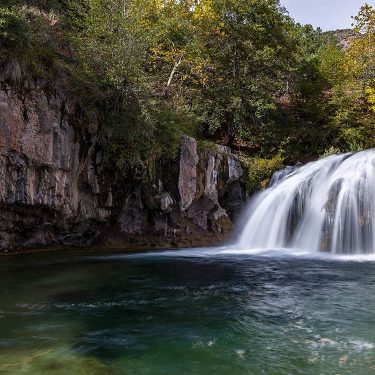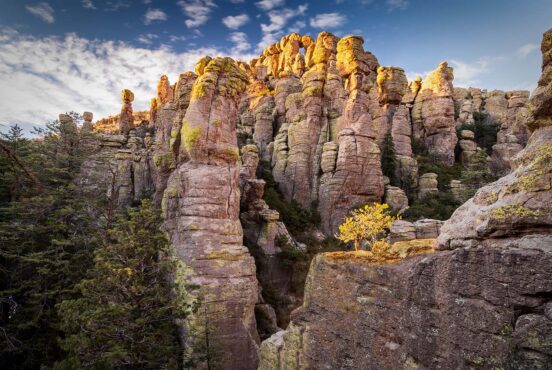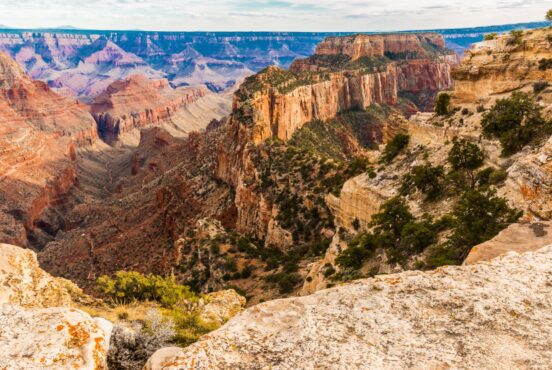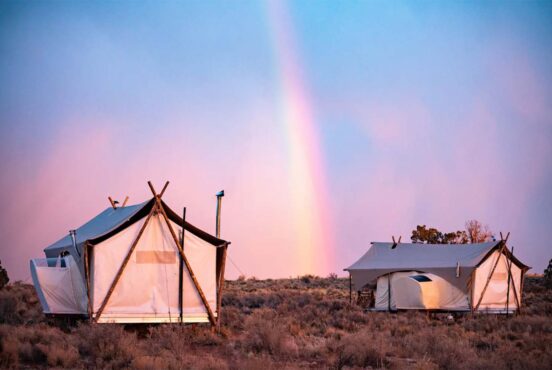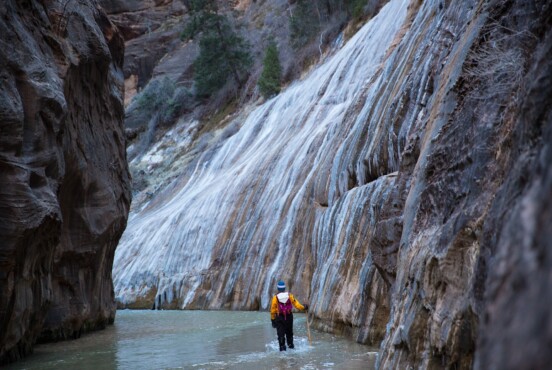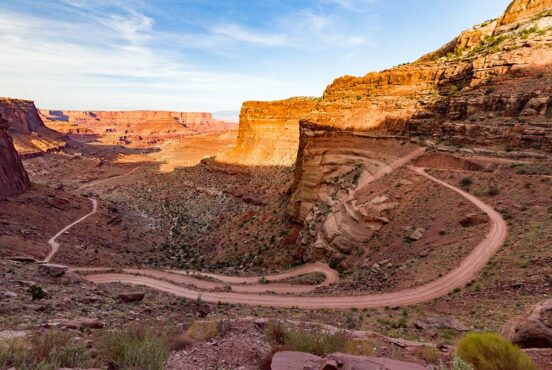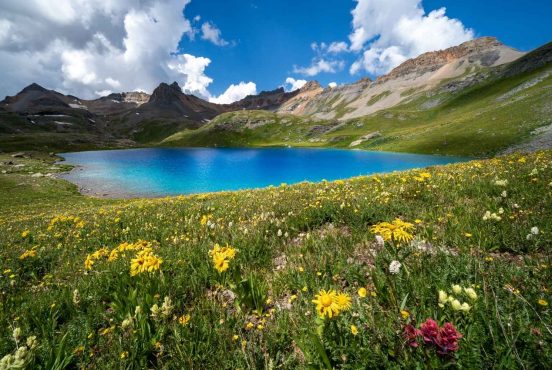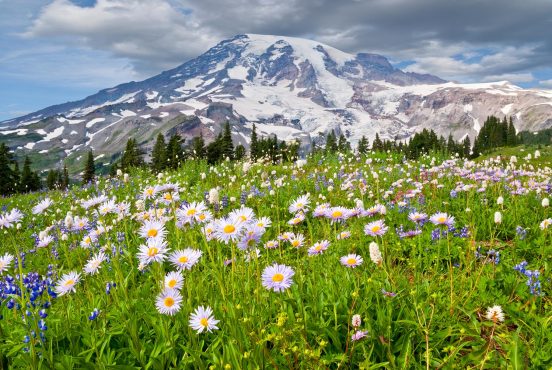Every week I hike the Triple Lakes Trail from the south end of Denali National Park and Preserve, it transforms before my eyes.
With more than 650 species of flowering plants in the park, I check off at least 50 varieties throughout the season as I journey along this one trail. In May, the dried-up grasses and sedges wake up from their winter nap and start poking through the snow. The only splash of color on the sunniest hillsides is the purple of the pasque flowers. Throughout June, white Labrador tea, pink prickly rose, purple lupines, yellow buttercups, and bluebells blossom for their brief debuts.
In July, the iconic Alaska flower blooms. Fireweed—the one that serves as Alaska’s calendar for the summer—has multiple stages. Watching the vibrant pinkish-purple flowers march up the sturdy stalk is a reminder to embrace our warm months. Because when the fireweed turns to cotton—usually early September—summer is forgotten.
During August, I go on an eating tour of Denali. Blueberries, raspberries, crowberries, lingonberries (low-bush cranberries), red currants, juniper berries, and more line the trail (Pro tip: The national park allows berry picking for personal consumption!)
Fall is upon us in September, and the undercarriage takes the stage. Mosses, lichens, ferns, horsetails, and fungi add to the colorful tapestry of the berry bushes’ changing leaves. Milkcaps, boletes, amanitas, fairy bonnets, and puffballs beg to be foraged, though I leave them be since my mushroom knowledge is scant.
Comparable to the size of Massachusetts—yet with only one single road in and out—Denali National Park & Preserve is where you truly escape the shackles of concrete and congestion. Even the hiking is primeval, as there are only 35+ miles of established trails, but about 6 million acres of off-trail wilderness to explore. As a hiking guide who lives right near the national park, the wild and civilized share a blurred boundary.
Best Hikes in Denali National Park
While I may be partial to the Triple Lakes Trail, all seven of these Denali hikes offer an impressive resume and taste of what is hidden deep within the boundaries of the park.
Related Read: 8 Breathtaking Alaska National Parks to Visit This Year
1. Triple Lakes Trail
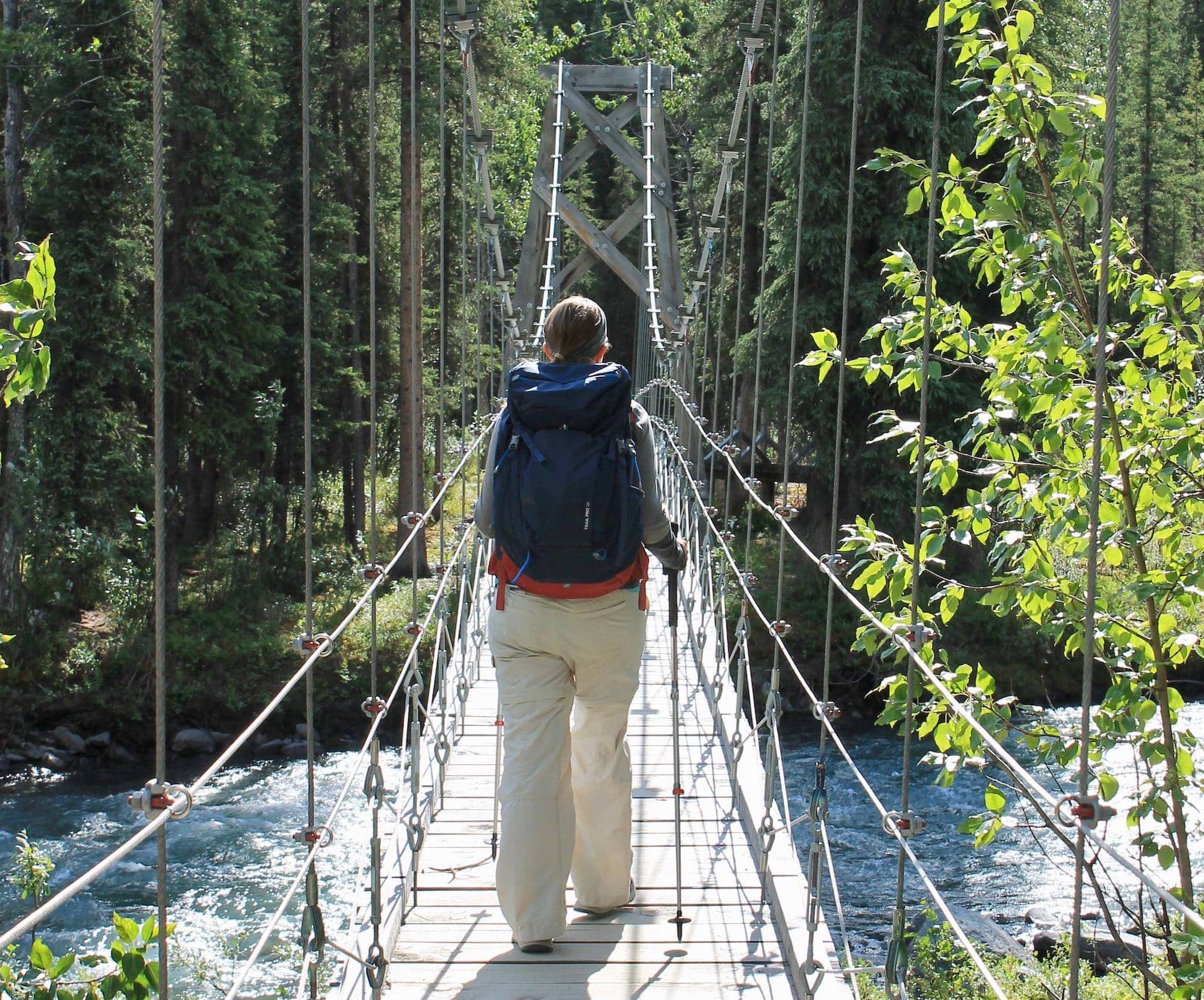
Why you should go: The lakes make for fantastic picnic lunches and the wildflower and berry variety is unmatched.
- Difficulty: Moderate
- Length: 9.5 miles (one way from north end to south end)
- Elevation gain: 1,450 feet
The Triple Lakes Trail can be done as a 9.5-mile end-to-end hike, with most people starting at the Denali National Visitor Center and ending at Denali Village. It’s the longest trail in the park. But walking that direction means you have to shuttle cars, and have almost all the elevation gain before reaching the three lakes later in the hike. Instead, I prefer to do an out-and-back from the newly built south trailhead outside Denali Village. This gets you to all three lakes for a roundtrip mileage of 7 miles and about 1,300 feet of gradual climbing. Not too strenuous overall, and any of the three lakes make for a nice lunch spot.
2. Horseshoe Lake
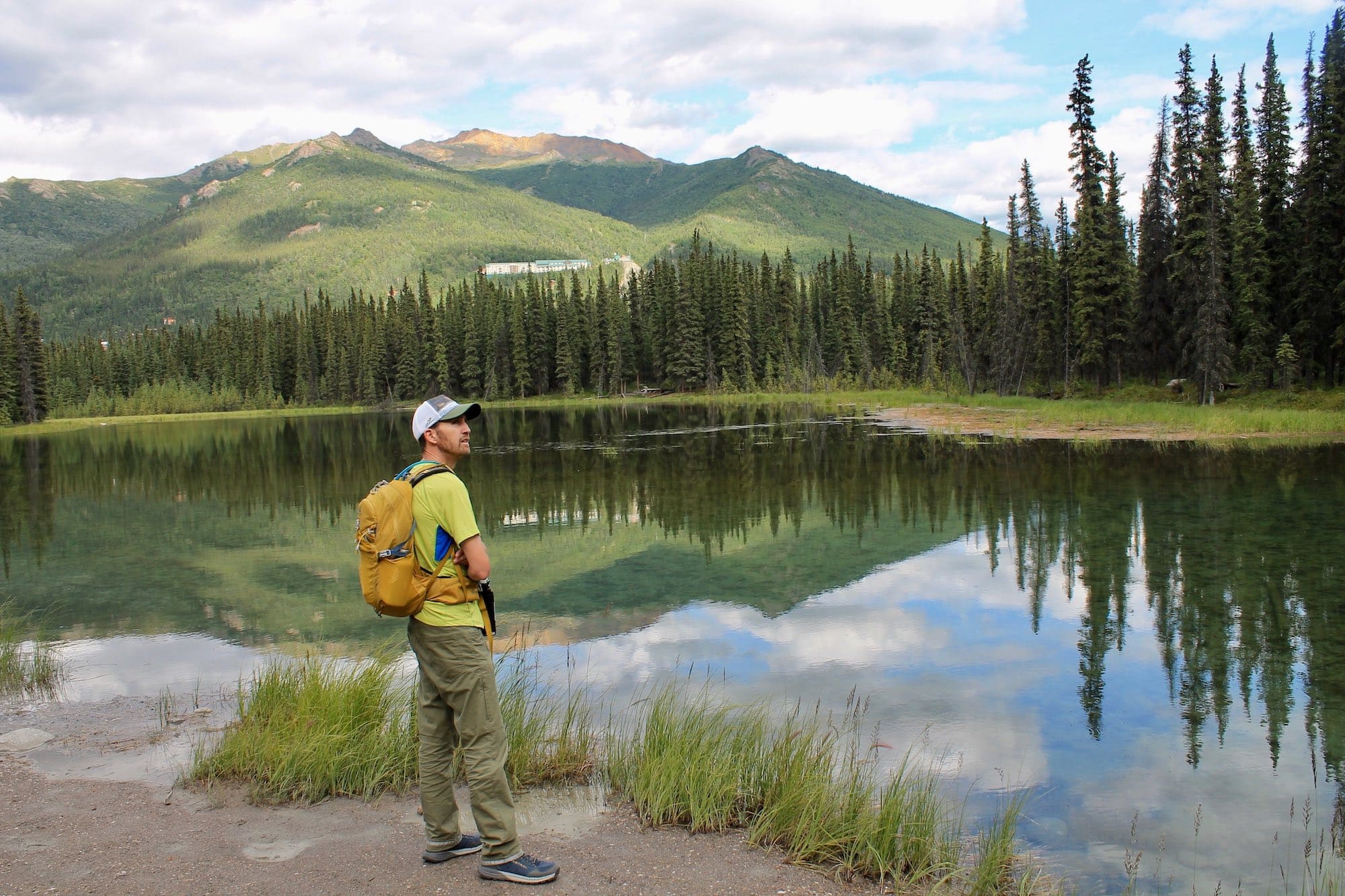
Why you should go: If you’re lucky, you might spot beavers and moose in Horseshoe Lake.
- Difficulty: Easy to moderate
- Length: 2 miles (roundtrip)
- Elevation gain: 370 feet
Horseshoe Lake is equally as beautiful in the summer as it is in the winter, so much so that I’m not sure which is my favorite season. The park is open year-round, but the road is not plowed past mile three. Since this trail is located in the frontcountry, Horseshoe Lake is accessible even with snowfall (but likely with snowshoes).
Before heading downhill to get up close and personal with Horseshoe Lake and the Nenana River, you’ll enjoy sneak vistas as you cruise through the spruce forest—with bench seating to boot. Experience komorebi, as the sunlight leaks through the bottle brush branches of the spruce trees bedecked with lichen. In winter, the spruce needles wear the sparkling frost as if it were a warm coat and you essentially walk through Narnia.
Once you drop downhill, there’s a short loop that walks alongside the glacially-fed Nenana River and hugs the lake all the way around its horseshoe shape. Beavers are active with dams and lodges to observe their incredible work.
Related Read: 10 Amazing Glamping Spots in Alaska
3. Rock Creek to Roadside Loop
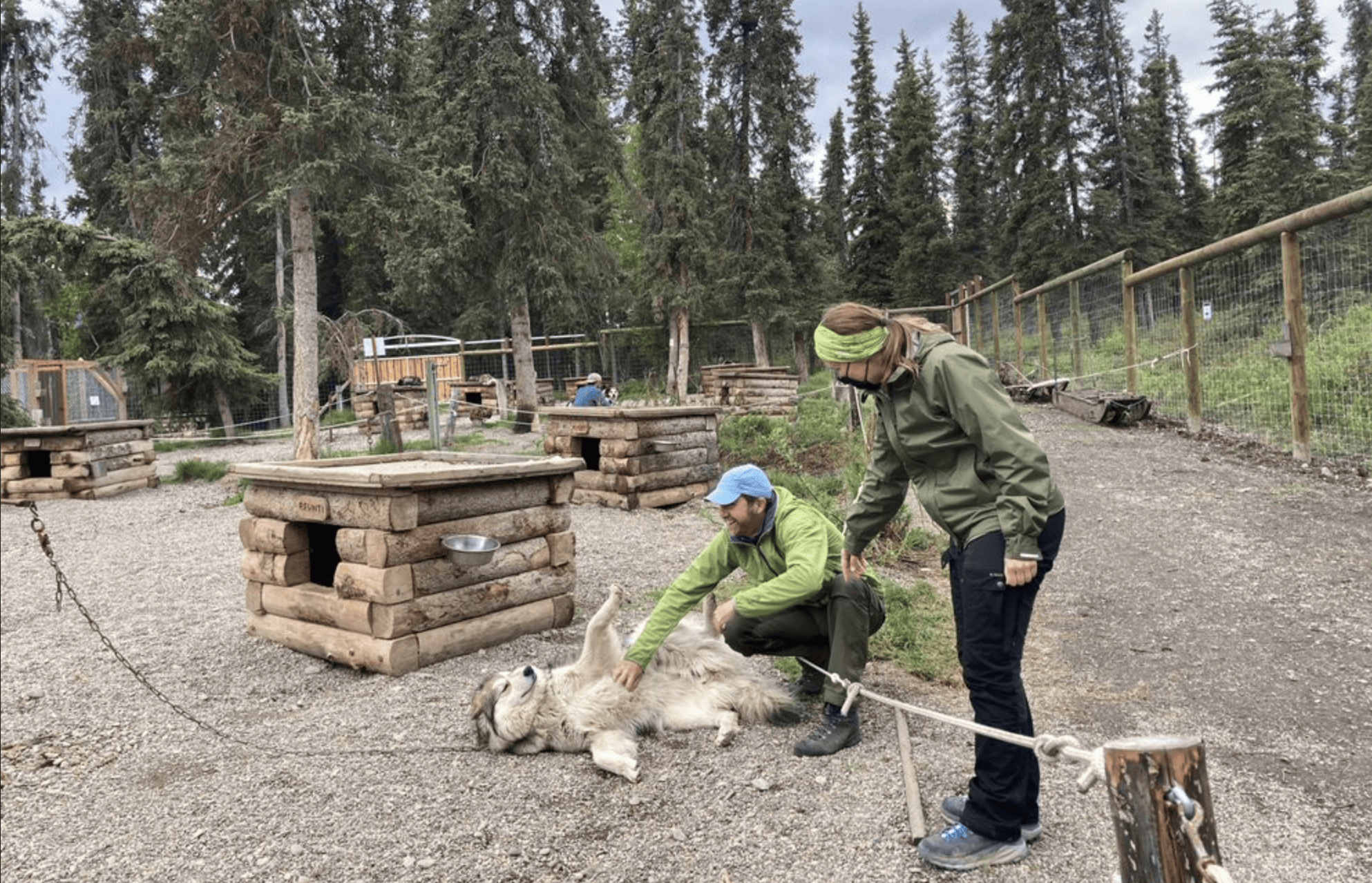
Why you should go: When else can you get the sweet reward of seeing sled dogs halfway through a hike?
- Difficulty: Moderate
- Length: 5 miles
- Elevation gain: 950 feet
Denali is the only national park to have a working sled dog kennel. The Alaskan husky rangers work more in the winter, patrolling and hauling supplies across the vast winter wilderness. In the summer, they enjoy pets from visitors around the world. The kennels also do demos a few times a day if you can time your hike accordingly.
I personally like to hike the loop counterclockwise, taking Rock Creek out to the kennels, then cruising back on the shorter Roadside Trail. Overall, it’s a quiet forested trail with a few steep climbs, but no more than a 15 percent grade.
4. Savage River Trail
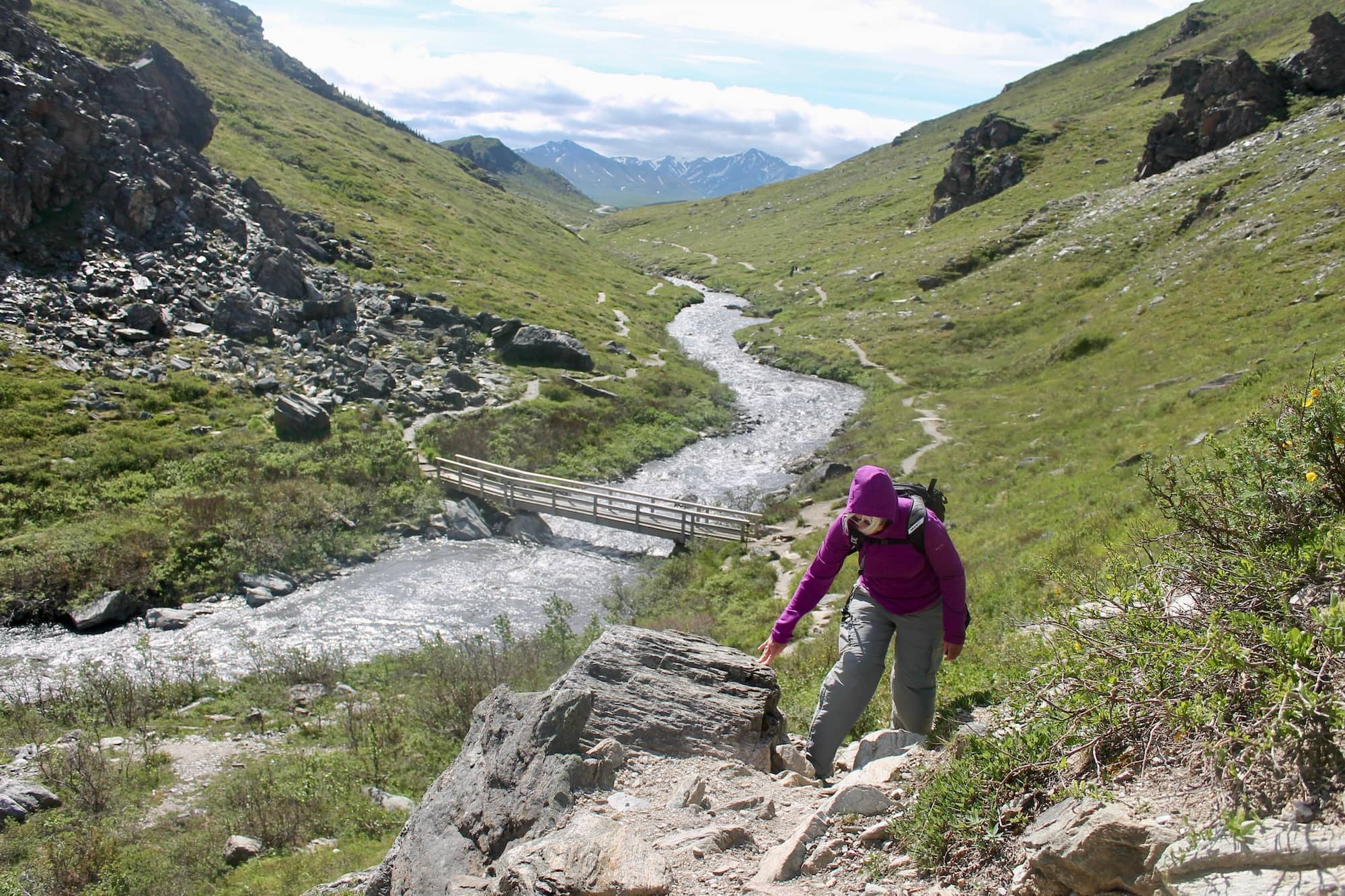
Why you should go: The geologic clawmark of the river is mesmerizing.
- Difficulty: Easy
- Length: 2.5 miles (roundtrip)
- Elevation gain: minimal
Most of the park’s trails are largely centralized around the visitor center, but this one is not. Visitors can only drive the first 15 miles of the 92-mile road that divides those millions of acres of untamed land. The rest of the road is only accessible via a tour bus or a transit bus (which are both A+++).
The drive out to the Savage River is worth it in itself, but getting out to stretch your legs on this easy loop is a no-brainer. Here you see a canyon that was built up by eruptions, rivers, and glaciers, but is now wearing down by erosions as you walk through the guts of the rocks.
Pro tip: this is a busy and popular trailhead. Alaska is literally the land of the midnight sun, so it is not unheard of to do this hike at night to eliminate parking headaches and to have the trail all to yourself.
Related Read: The Best Time to Visit Alaska: A Year-Round Planning Guide
5. Savage Alpine Trail
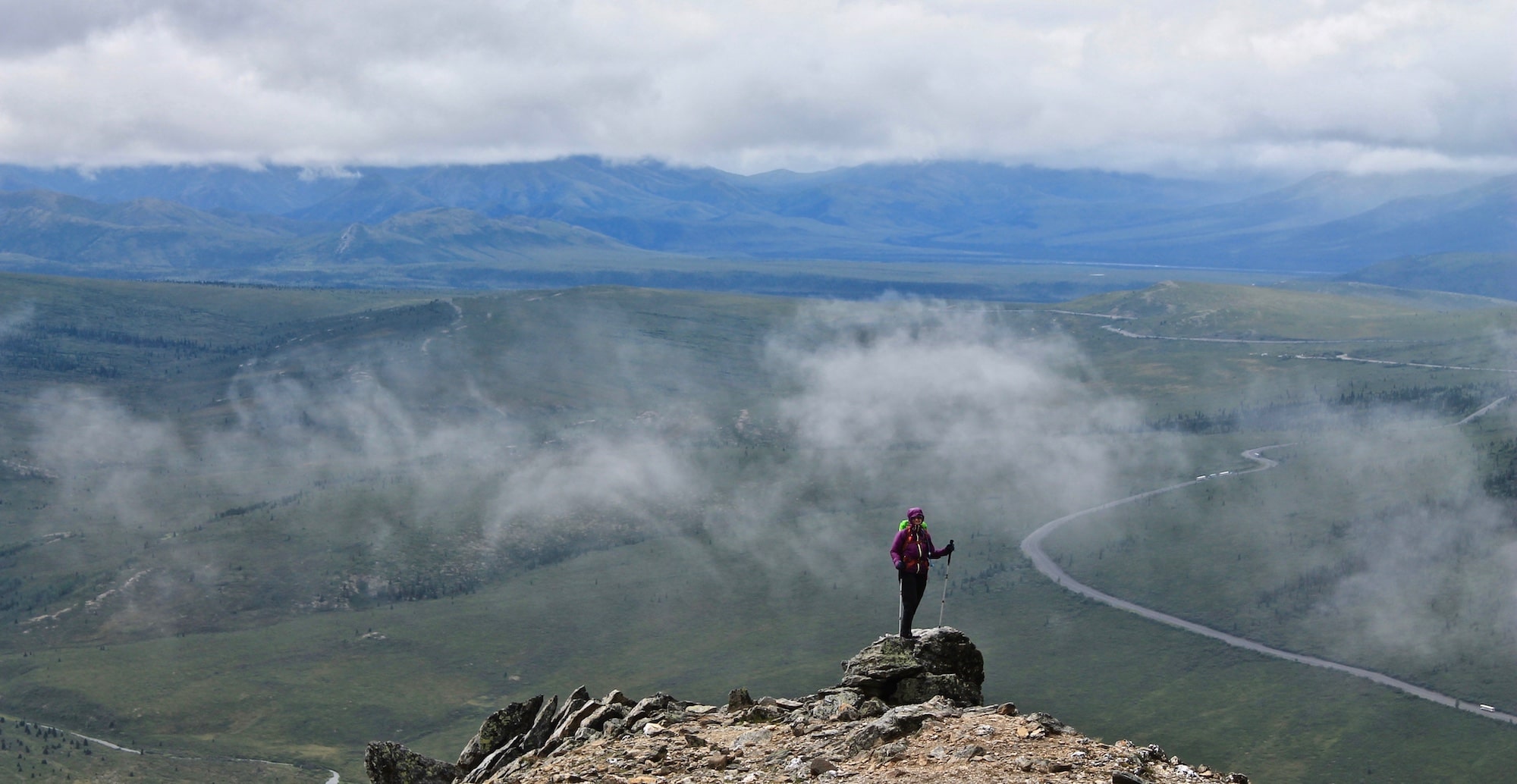
Why you should go: The path to the alpine might be as steep as an elevator shaft, but the vantage points make it worth it.
- Difficulty: Strenuous
- Length: 4.75 miles (one way)
- Elevation gain: 1,700 feet
The trail scrambles uphill at a 25 percent grade from the Savage River, but take some breaks to catch your breath and spot Dall Sheep across the way on Mount Margaret. The path eventually reaches its highest elevation of 4,110 feet where you can see Denali’s whole tundra landscape coming to life below.
Pro tip: Park at the Mountain Vista lot and take the park’s free shuttle to drop you off at the Savage River trailhead, then hike the trail northeast to end at your car in the Mountain Vista parking lot.
6. Mount Healy Overlook
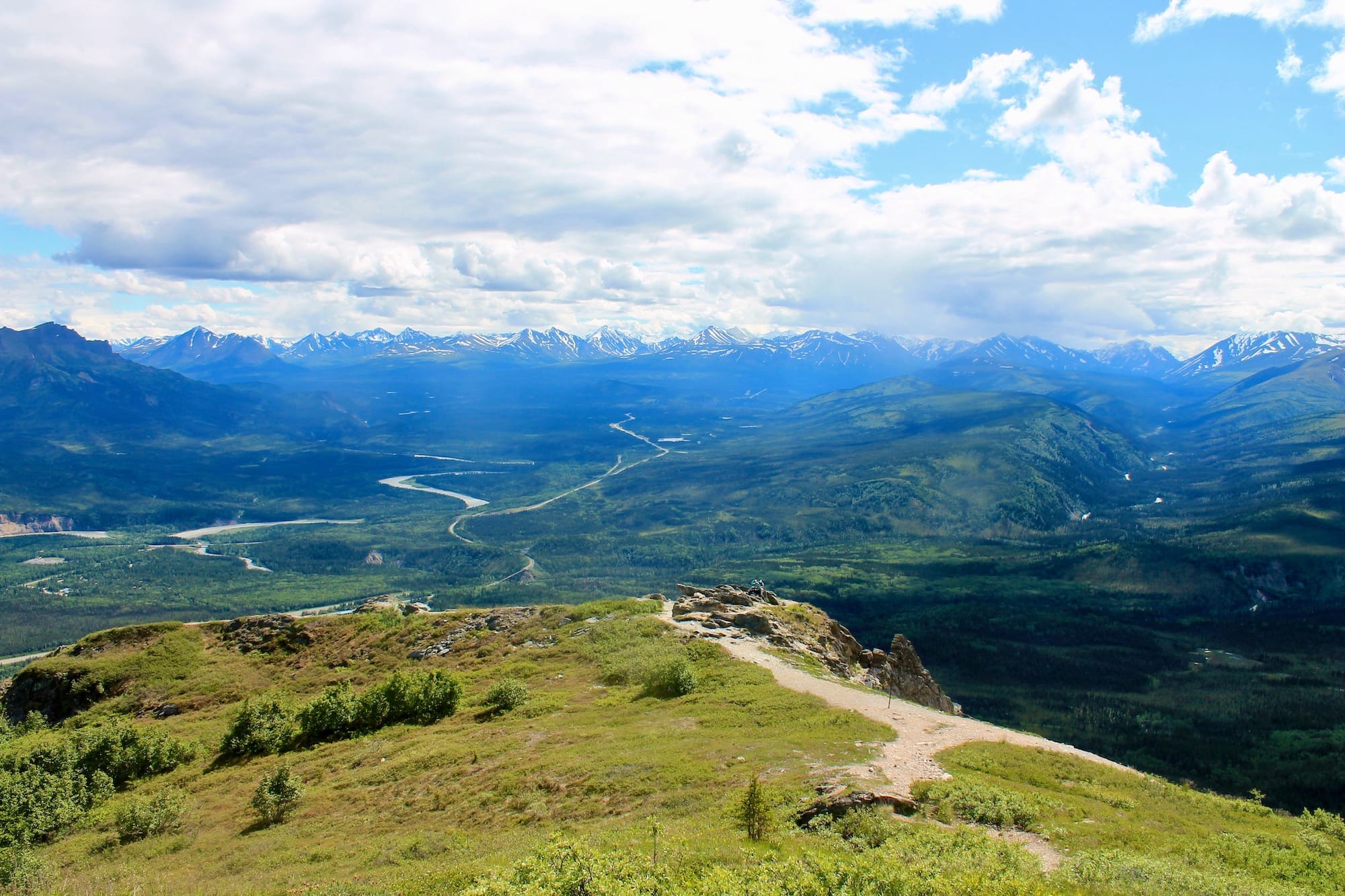
Why you should go: Since climbing Denali is more than a hike and unattainable for most hikers, this out-and-back offers thigh-burner peak-bagging within the park entrance area.
- Difficulty: Strenuous
- Length: 2.7 miles (one way)
- Elevation gain: 1,700 feet
Mount Healy’s elevation is only 5,716 feet, which is nothing compared to the park’s other snow-capped mountains. Instead, this mountain dominates over the frontcountry, begging park visitors to get a good workout in.
This established trail goes about halfway up Mount Healy, starting off gradually through the spruce forest. Then it hits treeline (which is 3,000 feet in Alaska), and the exposed switchbacks steepen and eventually top out at a 360-degree overlook. Hiking beyond where the trail peters out is permitted, but the terrain becomes a hand-over-foot rock scramble. (The summit would be another 2 miles and 1,500 elevation gain beyond).
7. Oxbow Loop
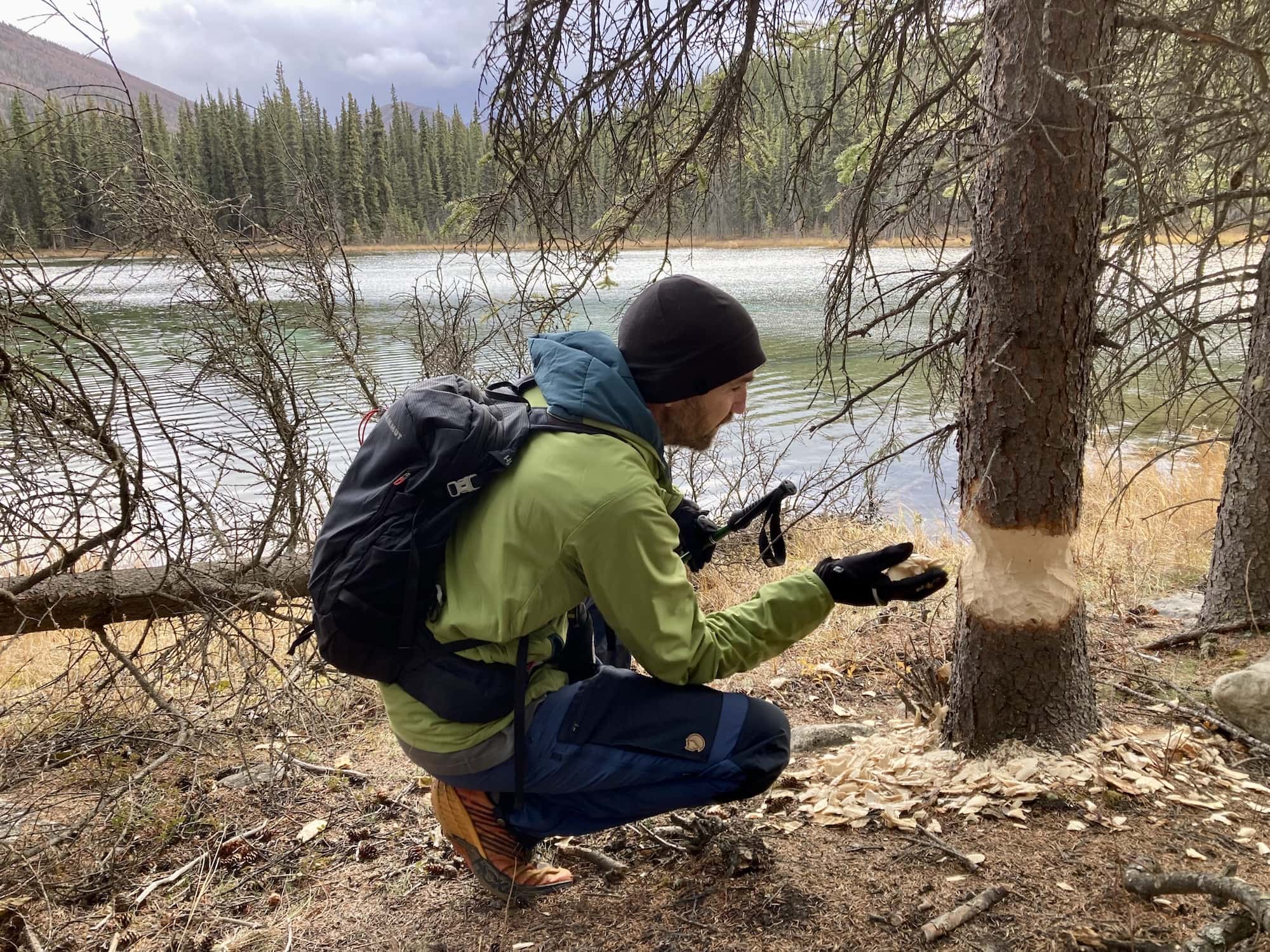
Why you should go: Watch rafters brave the 36-degree rapids of the Nenana River.
- Difficulty: Easy
- Length: 1.5 miles
- Elevation gain: Minimal
The Oxbow Loop shares a trailhead with Triple Lakes South outside of Denali’s frontcountry in Denali Park Village. Following the Nenana River, the trail contours the west bank in a U-shape from high above. Halfway through, it spits you out onto a gravel bar of the river so you can test the temperature of the water—if you dare.
Beyond the river panoramas, the forest full of spruce, aspen, and birch trees hold 100+ years of stories. Boulders and tree stumps wear elaborate beards of mosses and lichens, while uneven platforms of mushrooms and berries line the path.
This path is also accessible in the winter since it is just off the George Parks Highway – perfect for snowshoeing or skiing!
Find Your Next Alaskan Adventure
Get epic travel ideas delivered to your inbox with Weekend Wanderer, our newsletter inspiring thousands of readers every week.
Seen in: Alaska, Hikes, National Parks, West

